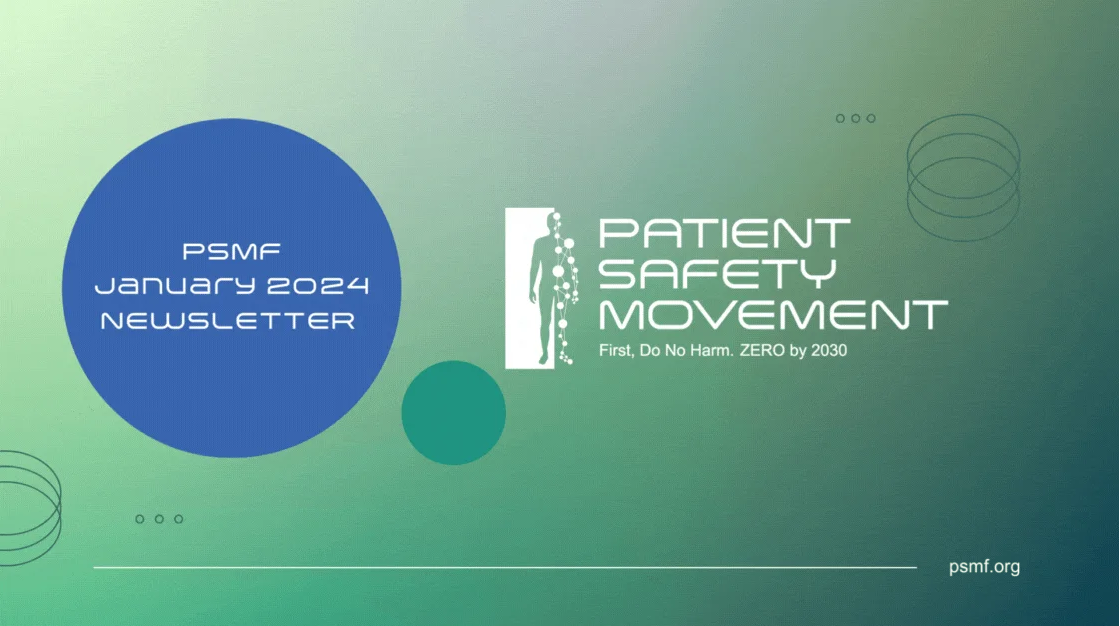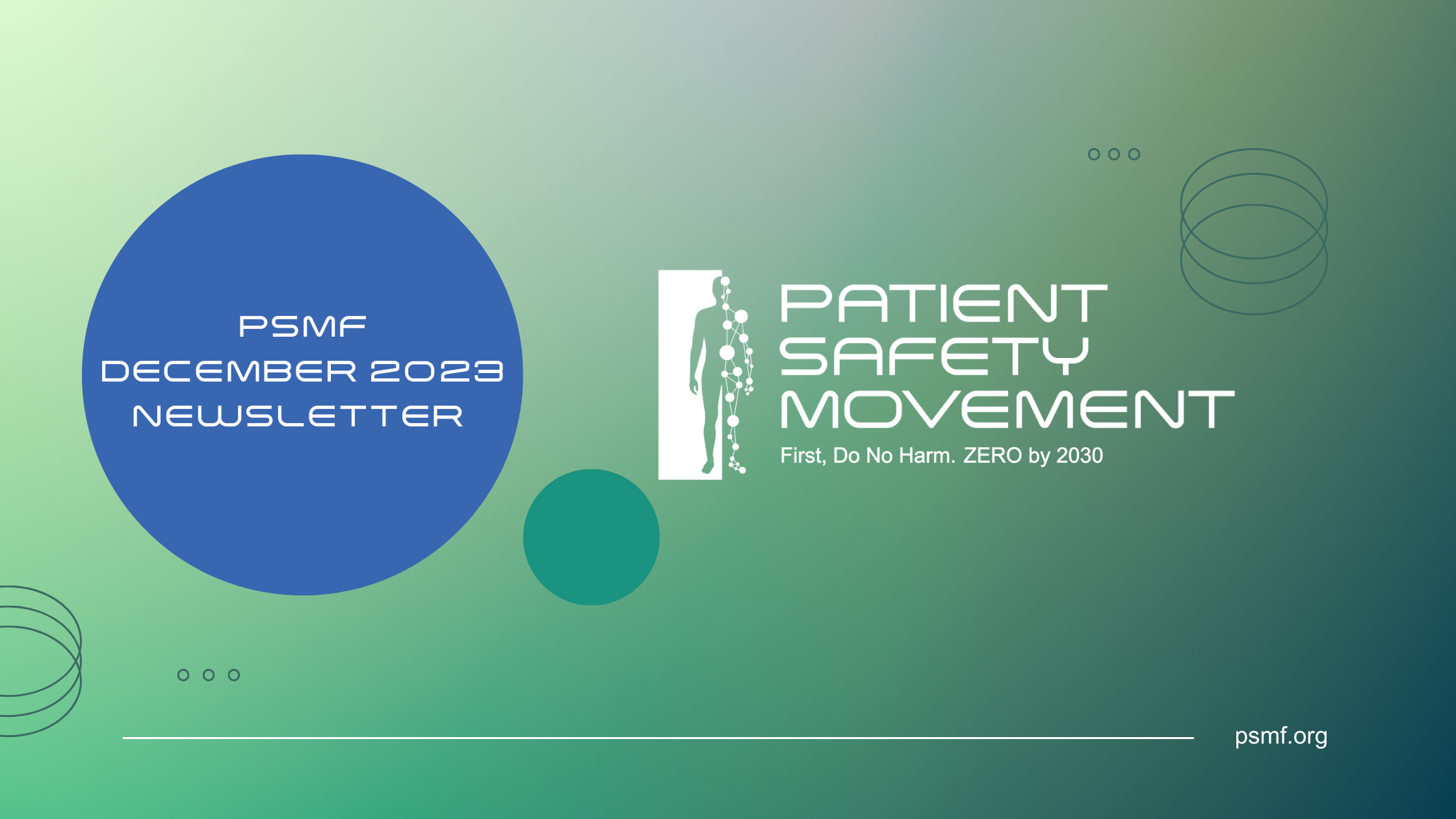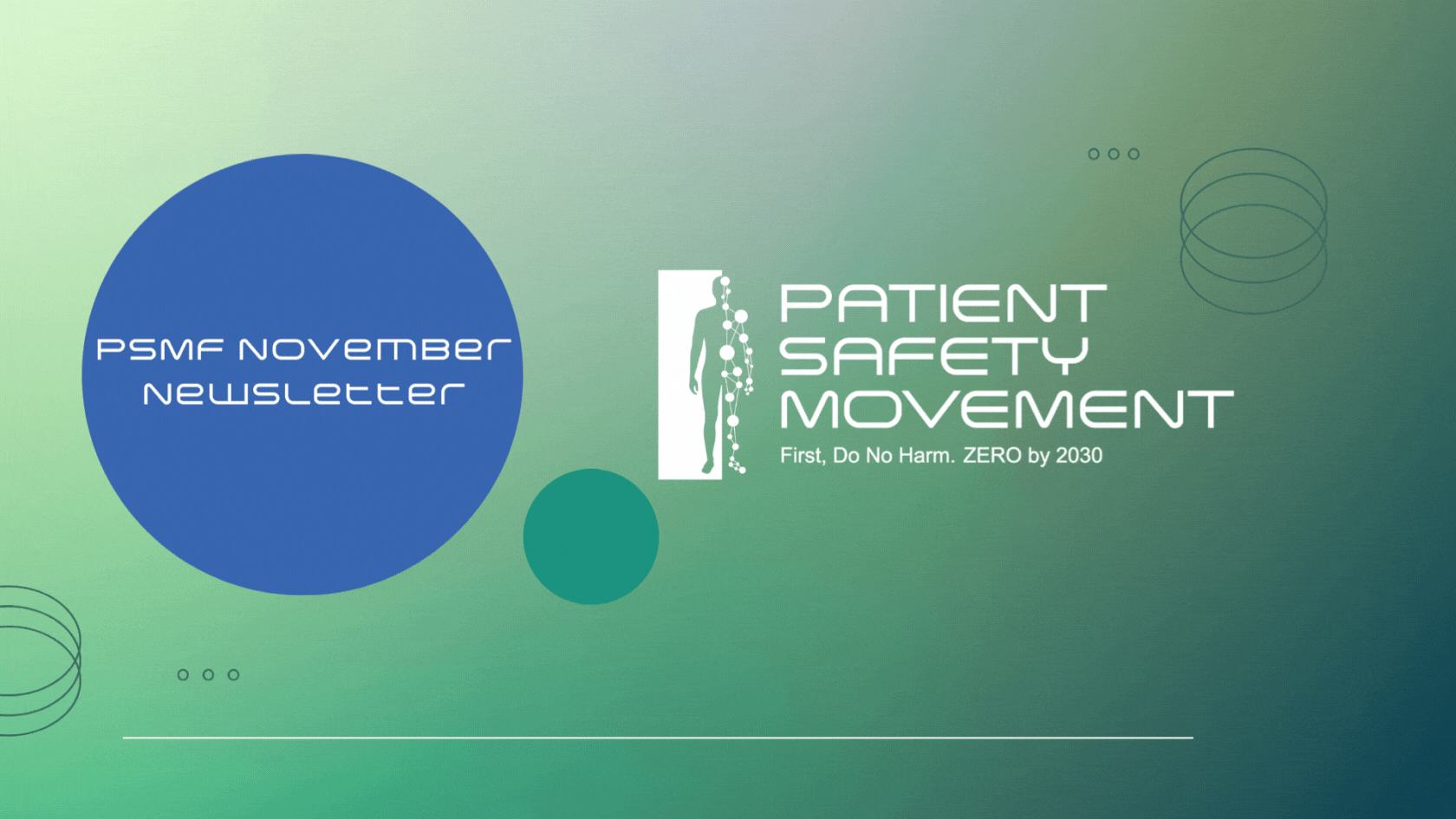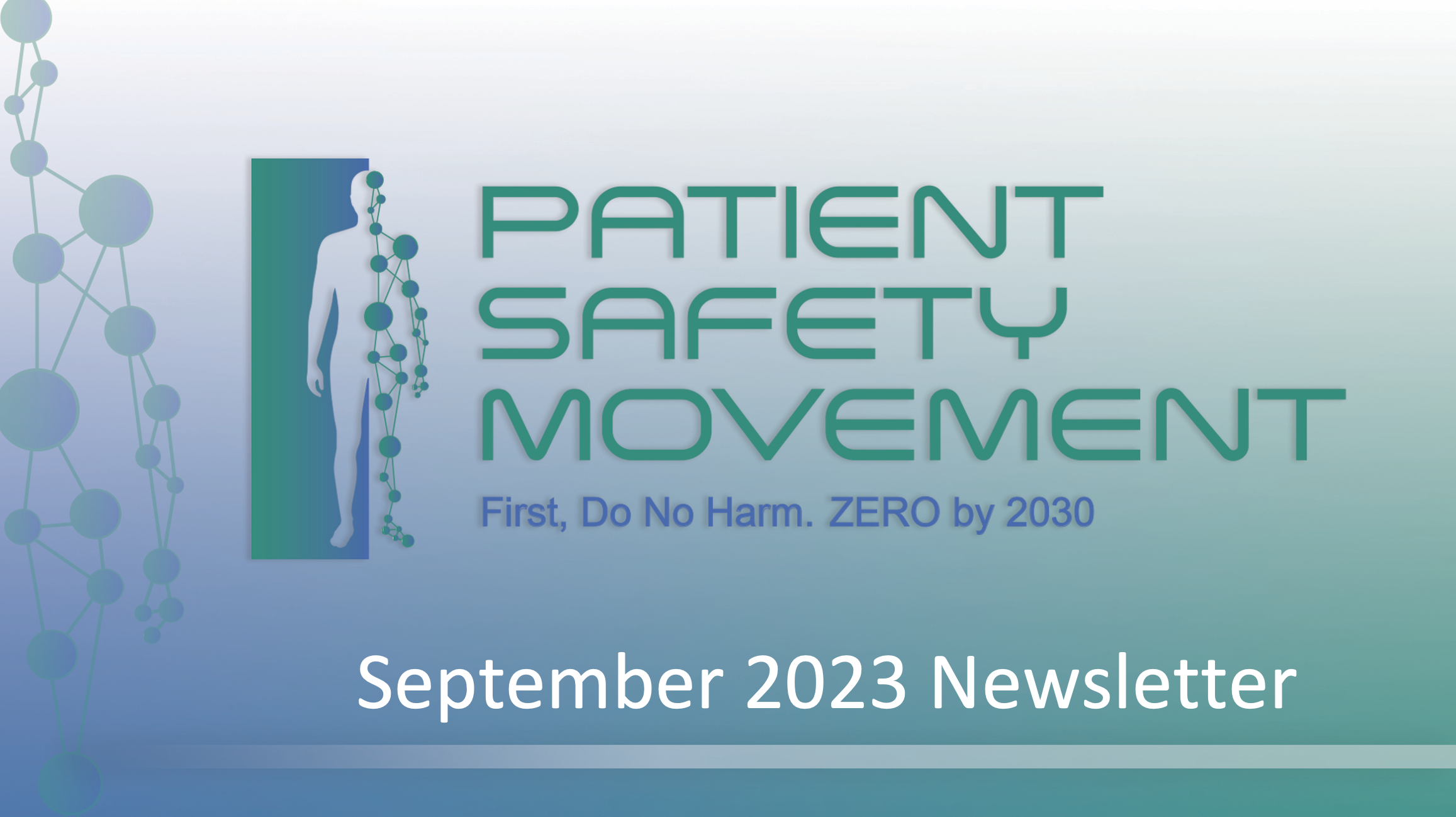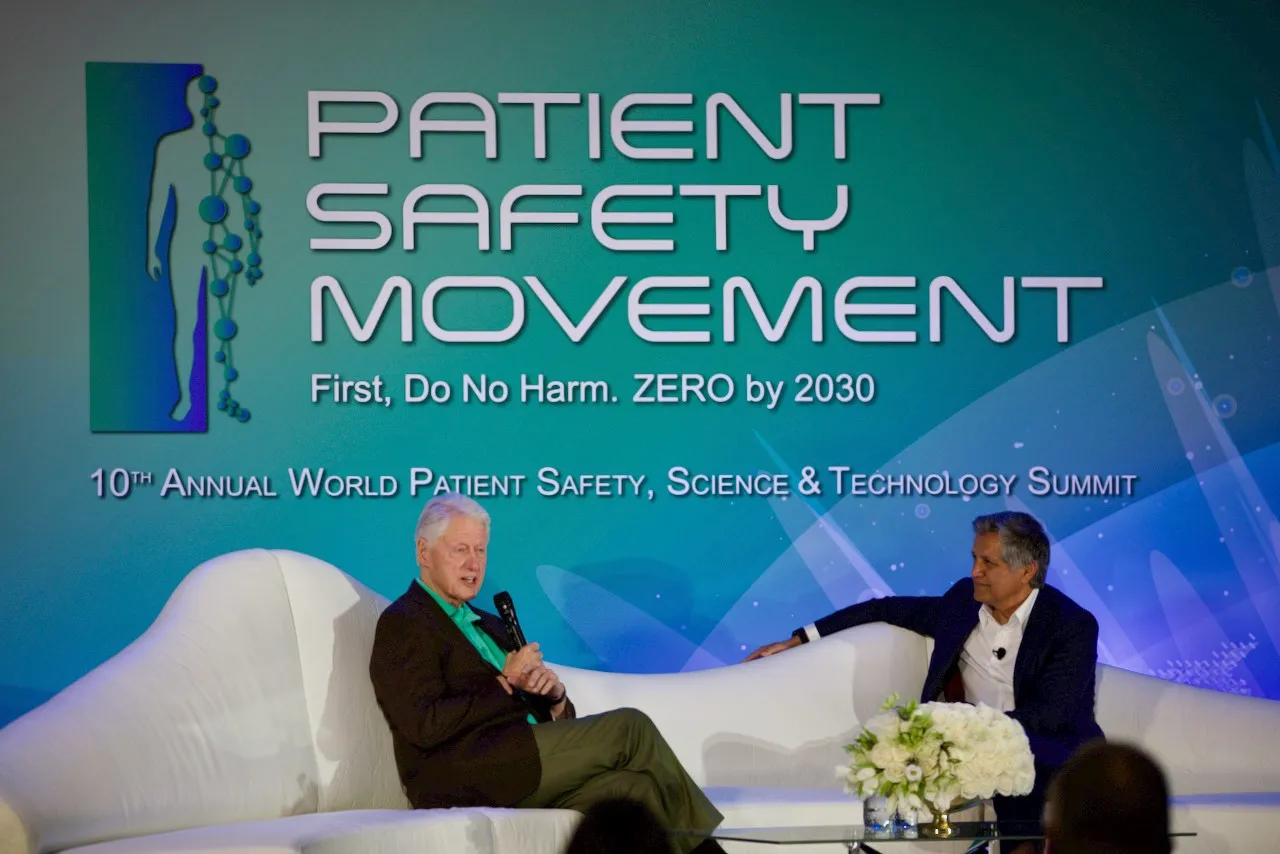Newsroom
Newsletter, March 2024
“I believe in data transparency, and it is unacceptable that we lack clarity on the true number of patient harm…
Newsletter, February 2024
“I believe in persistence. As long as the market is big enough and the reward is there if you ever…
Newsletter, January 2024
“Make your commitment to ZERO… starting with culture of safety from your executive governing board down to the lowest paid…
Patient Safety Movement Foundation’s Mid-Year Meeting Charts Course for Global Patient Safety Initiatives in 2024
IRVINE, Calif.—Jan. 26, 2024—The Patient Safety Movement Foundation (PSMF) convened its annual Mid-Year Event to discuss safety challenges in the…
Newsletter, December 2023
“I want to be very, very clear: We are in a moment where we have tremendous momentum. This is the…
Newsletter, November 2023
“If you are principled and you do the right thing for the right reasons, good things will eventually happen.” Joe…
Newsletter, October 2023
Letter from CEO The world is in more turmoil than usual, with wars going on and untold…
Achievement: 2023 Friend of FAER Honoree Steven J. Barker, PhD, MD, FACA
The Foundation for Anesthesia Education and Research (FAER) recognized Steven J. Barker, PhD, MD, FACA, as this year’s Friend of…
16th Annual Bellwether League Foundation inducted Charlie Miceli into the Healthcare Supply Chain Hall of Fame
Charlie Miceli, C.P.M., represents one of healthcare supply chain’s iconic first movers in creative thinking and action by way of…
Newsletter, September 2023
Clinton Global Initiative Panel Our Founder Joe Kiani recently participated in a panel on Health Equity at…
PSMF Endorses Berlin Declaration on Sepsis
On the occasion of World Sepsis Day and Central 2023 WSD Event ‘The Enactment of the WHO Sepsis Resolution on the National and International…
Newsletter, August 2023
Letter from CEO The last two months have seen some profound presentations, publications, and recommendations to improve…
Newsletter, July 2023
Letter from CEO As we in Texas sweat through a very hot July, I think back and…
Newsletter, June 2023
Letter from CEO We are very pleased to report that our first in-person Summit meeting in three…
The Patient Safety Movement Foundation Concludes Its 10th Annual World Patient Safety, Science & Technology Summit
President Clinton calls for a culture of conversion to promote patient safety in healthcare. Irvine, Calif., June 2, 2023 —…


